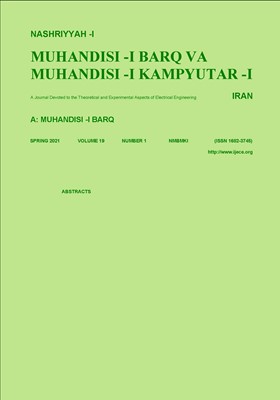-
-
List of Articles
-
Open Access Article
1 - Performance Improvement of Heterogeneous Networks with Backhaul Constraint through Decoupled Uplink and Downlink Access Policy
a. j. Zolfa Zeinalpour-Yazdi Aliakbar tadaion taft -
Open Access Article
2 - Analysis and Design of a Low Power Analog to Digital Converter Using Carbon Nano-Tube Field Effect Transistors
Saeedeh Heidari D. Dideban -
Open Access Article
3 - Controller Design and Asymptotic Stability Analysis of a Buck Converter with a Cascade Control Structure Using Singular Perturbation Theory
Sajad Azarastemal Mohammad Hejri -
Open Access Article
4 - Improving On-Off Current Ratio (Ion/Ioff) in Schottky-Barrier-Type Graphene Nanoribbon FETs
Morteza Gholipour -
Open Access Article
5 - Comprehensive Optimal Management System of Distributed Resources Using Dynamic Neural Network in Modeling of Electricity Consumption Uncertainty for Grid-Connected Microgrids
Mohammad Veysi محمدرضا سلطانپور jafar Khalilpour hadi niaei -
Open Access Article
6 - H∞ Robust Stability Augmentation System Design by Genetic Optimal Coefficient for HUAV MIMO Model with Coupled Dynamics
zahra salamati zahra nejati alireza faraji -
Open Access Article
7 - New Structure of Wind-PV Farm with Improved Performance under Voltage and Frequency Fault Conditions
Mehrdad Tarafdar Hagh Farshid Najaty Mazgar -
Open Access Article
8 - Energy Efficiency in Secrecy Multi-Antenna Two-Way Relay Networks
F. B. soroush akhlaghi
-
The rights to this website are owned by the Raimag Press Management System.
Copyright © 2017-2025







